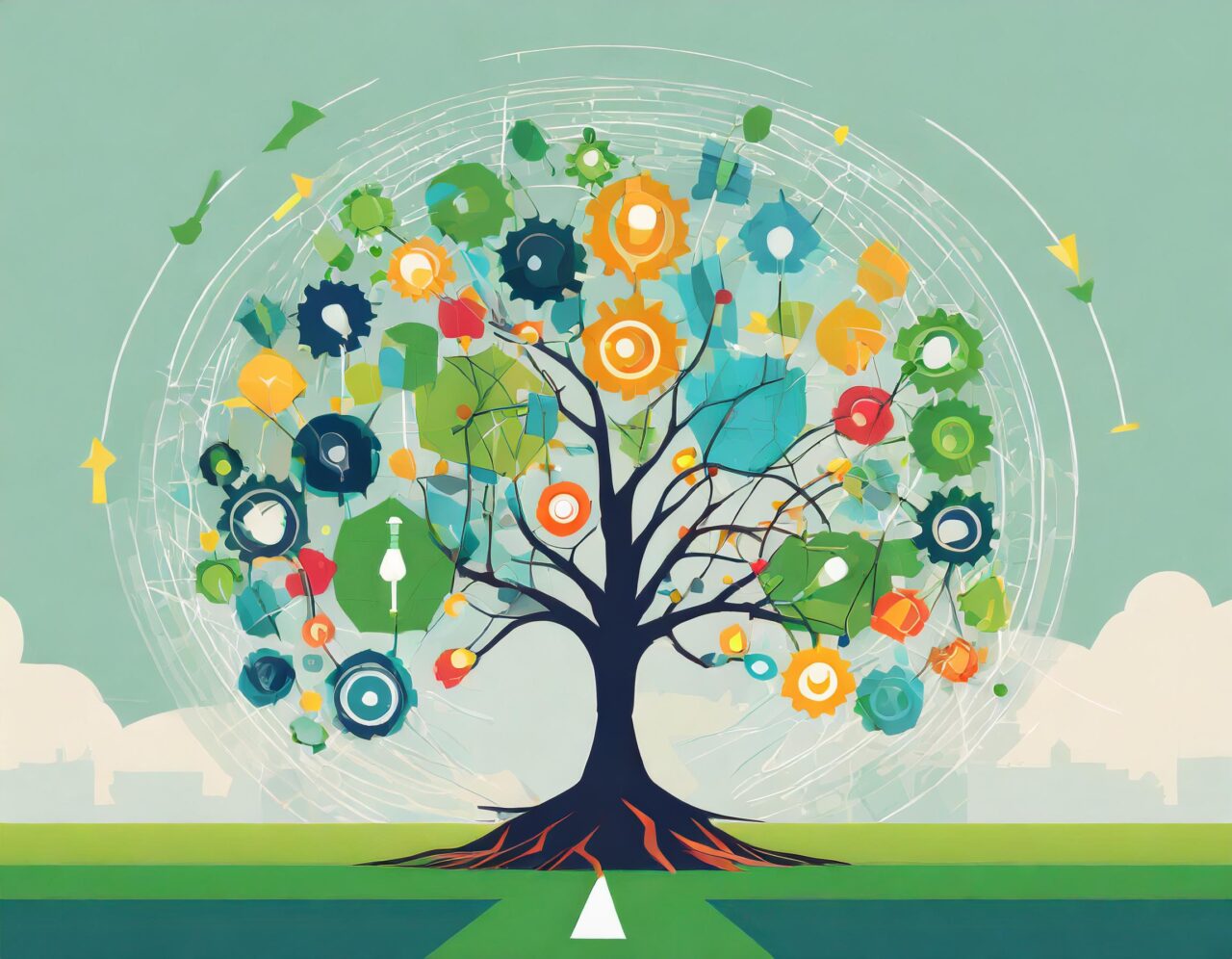The business landscape is no longer a solitary pursuit. Today, companies are increasingly recognizing the power of collaboration and interconnectedness. This is where the concept of ecosystem-led growth takes center stage. But what exactly is an ecosystem, and how can it fuel your company’s success?
What is an Ecosystem?
Imagine a thriving forest teeming with life. Different species of plants and animals coexist, each playing a vital role in the overall health and balance of the environment. This intricate web of interactions is a perfect example of an ecosystem.
In the business world, an ecosystem refers to a network of interconnected organizations, including businesses, startups, academic institutions, and even government bodies. These players collaborate, share resources, and leverage each other’s strengths to create a mutually beneficial environment that fosters innovation and growth.
The Core Elements of an Ecosystem:
- Diversity: A thriving ecosystem is built on a foundation of diverse players, each bringing unique skills, resources, and perspectives to the table.
- Interdependence: No single entity operates in isolation. Each player relies on the others to function effectively and contribute to the overall success of the ecosystem.
- Value Creation: Collaboration allows ecosystem members to co-create value propositions that are greater than the sum of their individual efforts.
- Open Communication and Collaboration: Effective communication and a collaborative spirit are essential for fostering trust, knowledge sharing, and joint problem-solving within the ecosystem.
Understanding Ecosystem-led Growth
Ecosystem-led growth is a strategic approach that leverages the power of interconnected networks to achieve sustainable business expansion. Companies that embrace this approach focus on cultivating a network of partners and collaborators, working together to create value for all stakeholders involved.
The Benefits of Ecosystem-led Growth:
- Enhanced Innovation: Collaboration sparks creativity and innovation as diverse players bring new ideas and approaches to the table.
- Expanded Market Reach: By collaborating with complementary businesses, you can tap into their customer base and extend your market reach.
- Resource Optimization: Ecosystems allow for resource sharing and specialization, enabling companies to focus on their core competencies.
- Increased Efficiency: Streamlined processes and collaboration can lead to improved operational efficiency and faster time-to-market.
- Risk Mitigation: Diversifying your business model through collaboration with various partners can help mitigate risks associated with market fluctuations.
Examples of Ecosystem-led Growth in Action:
- Fintech Ecosystems: Banks and financial institutions are partnering with fintech startups to offer innovative financial products and services.
- Retail Ecosystems: Major retailers are collaborating with logistics providers, delivery services, and online marketplaces to create seamless omnichannel shopping experiences.
Common Misconceptions About Ecosystem-led Growth
- Loss of Control: Some companies might hesitate due to a perceived loss of control. However, successful ecosystems foster a collaborative environment where all players contribute and benefit.
- Complexity: Building and managing an ecosystem can seem complex. However, a clear strategy, effective communication, and the right technology tools can streamline the process.
- Short-term Gains: Ecosystem-led growth is a long-term strategy focused on building sustainable value for all participants.
By understanding the core principles of ecosystems, the benefits of ecosystem-led growth, and addressing any misconceptions, companies can position themselves to thrive in today’s interconnected business landscape.
Frequently asked questions
What is an ecosystem in business terms?
An ecosystem refers to a network of interconnected businesses, startups, academic institutions, and even government bodies. These players collaborate, share resources, and leverage each other's strengths to create a mutually beneficial environment that fosters innovation and growth. Think of it as a business web where everyone contributes to the overall success.
What are the core elements of a thriving ecosystem?
- Diversity: A variety of players with unique skills, resources, and perspectives are essential.
- Interdependence: Each player relies on the others to function effectively and contribute to the ecosystem's success.
- Value Creation: Collaboration allows members to co-create value propositions that are greater than their individual efforts.
- Open Communication and Collaboration: Effective communication and a collaborative spirit are key for building trust and working together.
What is ecosystem-led growth?
It's a strategic approach that leverages interconnected networks to achieve sustainable business expansion. Companies focus on cultivating a network of partners and collaborators to create value for everyone involved.
What are the benefits of ecosystem-led growth?
- Enhanced Innovation: Collaboration sparks creativity and innovation as diverse players bring new ideas to the table.
- Expanded Market Reach: By collaborating with complementary businesses, you can tap into their customer base and extend your reach.
- Resource Optimization: Ecosystems allow for resource sharing and specialization, enabling companies to focus on their core competencies.
- Increased Efficiency: Streamlined processes and collaboration can lead to improved operational efficiency and faster time-to-market.
- Risk Mitigation: Diversifying your business model through collaboration with various partners can help mitigate risks.
Are there any common misconceptions about ecosystem-led growth?
Yes, here are a few:
- Loss of Control: Successful ecosystems foster a collaborative environment, not a power struggle.
- Complexity: Building and managing an ecosystem can be streamlined with clear strategies and communication tools.
- Short-term Gains: Ecosystem-led growth is a long-term strategy focused on building sustainable value for all participants.



